Jackson Hole Wildlife Log Early February 2017
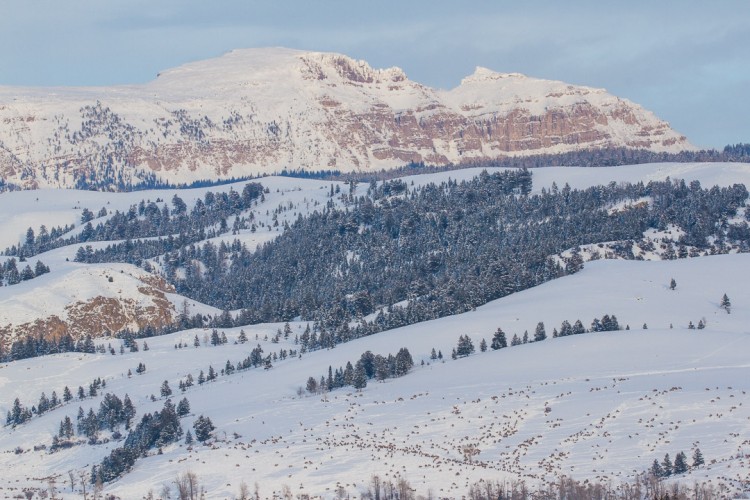

Elk concentrate on the southern end of the National Elk Refuge. By traveling single file less energy is used walking through the snow.
From extreme winter snows to beautiful sunshine, wild weather has characterized the first part of February 2017. Big storms relentlessly dropped snow and rain on Jackson Hole, creating dangerous avalanche conditions including several slides on mule deer and bighorn winter range near Jackson. However, rain has dramatically decreased snow depth in the valley, opening up bare ground in some areas, increasing forage areas for wildlife. On the 11th a high pressure system entered the valley, bathing the Tetons in much appreciated sunshine.
Adapting to the deep snow
The National Elk Refuge has been providing supplemental feed to elk and bison since early January causing them to concentrate in high numbers. We watched this herd moving in anticipation last week before the storm lifted.
Mule deer, previously visible along the East Gros Ventre Butte, moved to other habitats in early February to avoid the deep snow. With rain decreasing snow depth, many have returned to their typical habitats. With the large amount of movement collisions with vehicles remain a major concern, please drive slow and watch for wildlife
Feathered Observations
Though many great gray owls have left the Jackson Hole valley for the winter, Ecotour Adventures Guides were still able to find them on several trips in early February. Mating pairs will soon return to nest sites they have chosen in the fall, locating each other by hooting.
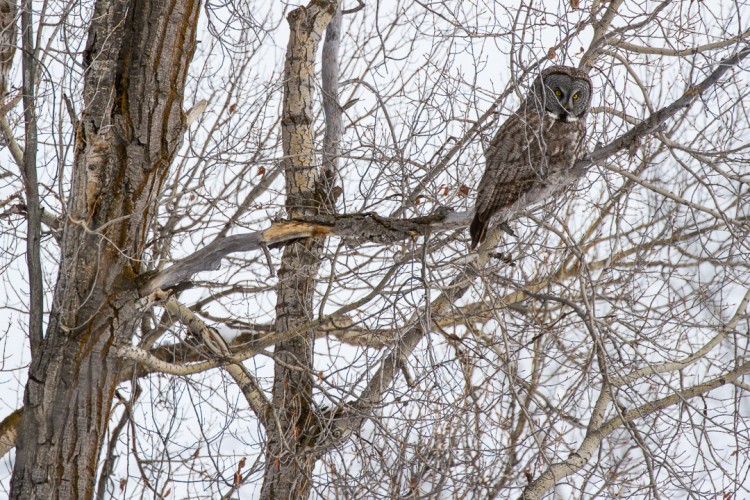
Rough Legged hawks were observed several times in early February. They winter across the United States before returning to the arctic circle in spring to nest. Greater Sage-Grouse have been a frequent sight this winter as they concentrate in sagebrush not covered up by deep snows. Both bald and golden eagles are prevalent on the National Elk Refuge, scavenging on carcasses of animals not able to survive the winter.
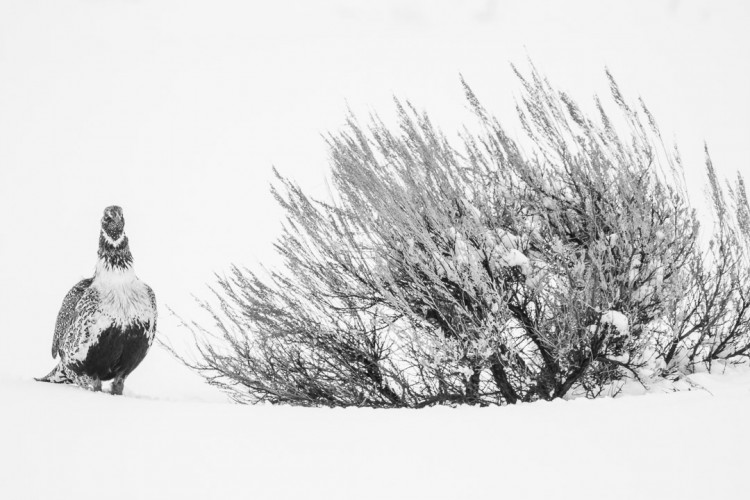
Sunshine Increases Wildlife Activity
Along with high pressure and sunshine arriving this Saturday, wildlife activity seems to have also increased. Guests on a winter multiday observed six different pairs of bull elk sparring in and around the waters of Flat Creek this weekend. Sparring is a friendly act, preparing bulls for more dangerous confrontations of the fall rut. See more photos here.
Several bighorn sheep rams, noticeably absent over the last few weeks, have again been observed along side herds of smaller ewes, juveniles, and lambs. A herd of younger pronghorn antelope is also attempting manage the snows on the National Elk Refuge, most of the 400+ pronghorn found in summer in Grand Teton National Park have migrated over 100 miles to the south.
Turpin Meadows Sunrise
Ecotour adventures guests were treated to a spectacular sunrise while staying at Turpin Meadows Ranch, including a bull moose standing beneath the Grand Teton. During the two day trip the group also found wolves, coyotes, and a fox in the northern part of the Park before heading down to observe the 8000+ elk currently on the National Elk Refuge.
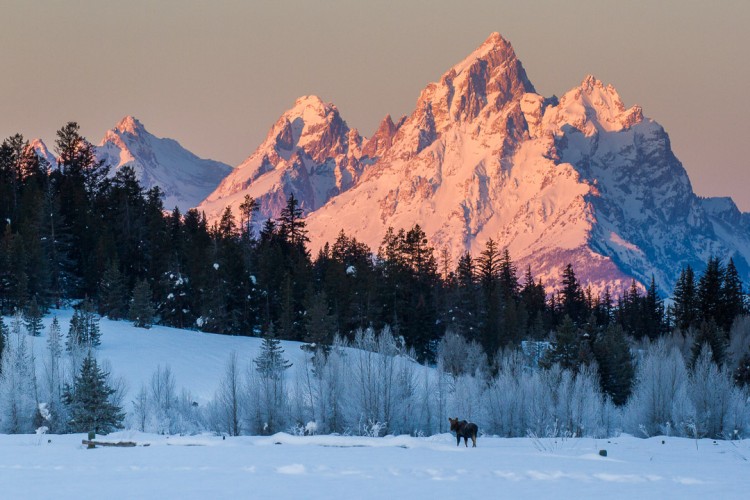
Though many other animals have traveled further south to avoid deep snows, moose are still found in Northern Grand Teton, foraging along rivers like the Buffalo Fork of the Snake River.
Beavers Emerge as Ice Melts
Warmer temperatures have opened up frozen sections of rivers and creeks in the valley leading to some spectacular wildlife sightings. While observing a moose this past weekend we were surprised to find two beavers carrying mud and sticks to a dam, watch the video for more!
Trumpeter swans and other waterfowl have been frequently seen in open water and we also observed a coyote patiently waiting at the edge of a hole in the ice, in hopes of catching a fish. Otters swimming beneath the surface were scaring them up close enough for the coyote to nab!
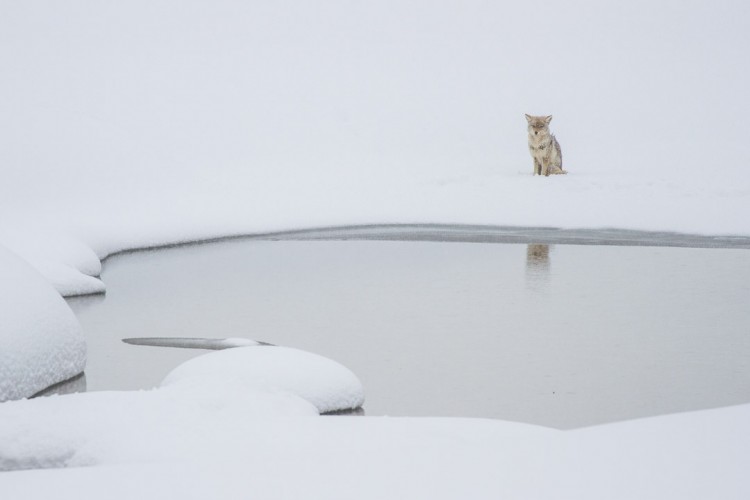
Coyotes will also steal fish from otters who usually carry them ashore to feed.
A hint of spring
The past week’s sunshine, longer days, and viewings of small song birds like vespers sparrows offer hints of spring, but winter will likely maintain its grip over the valley for several more months. The battle for survival in the Greater Yellowstone Ecosystem continues, for more photos of recent sightings visit our facebook page or follow along on instagram. To learn more about going on an Ecotour Adventure visit our website or call (307) 690-9533. We hope to see you soon!
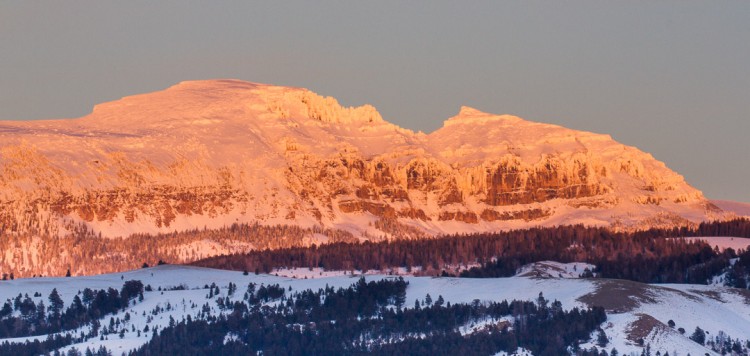
Photos and blog by Naturalist Josh Metten













